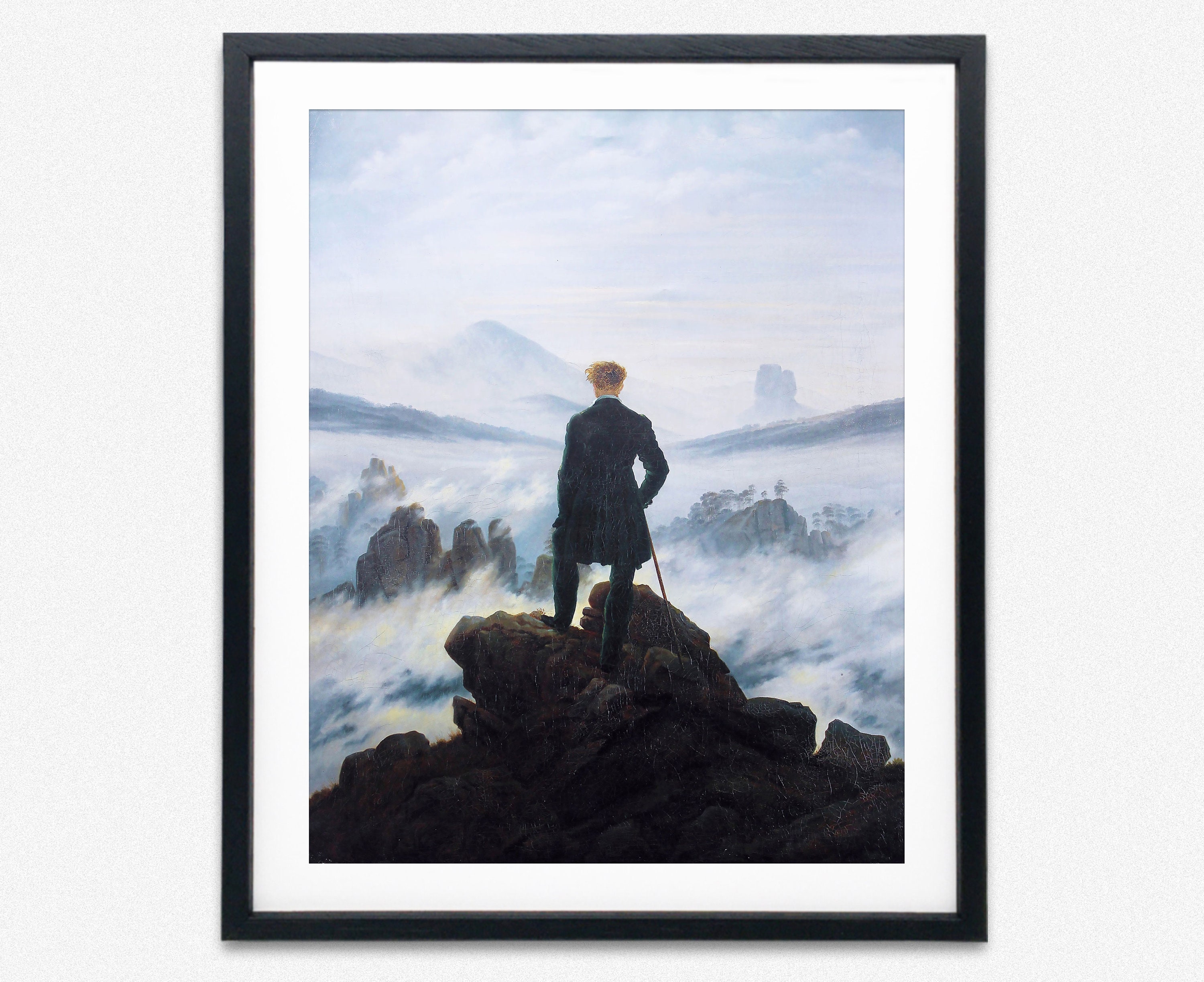

Indeed, the idea that standing at the peak of a mountain was anything to be celebrated was a revolutionary concept in itself. It promotes ideals of lone visionaries and explorers, boldly treading new paths and ideas. Murray notes how Caspar David Friedrich paintings all push our “gaze” towards their “metaphysical dimension”.Īs well as its influence on the art world, Wanderer Above the Sea of Fog has shaped modern conceptions of travel, exploration and mountain-climbing. Modern art historians (such as Christopher John Murray) agree with this interpretation. For Friedrich, this was of equal importance to figurative representation. Speaking of his art, Friedrich said an artist should paint “what he sees inside himself”. Akin to Socrates’ famous maxim “know thyself”, critics praise the painting for its intense contemplative nature. Wanderer Above the Sea of Fog is particularly representative however, seen as an icon of philosophical and existential self-reflection. Evidenced throughout practically all Caspar David Friedrich artworks, these ideas fundamentally inspired the artist. Subjectivity and individuality were the watchwords of the Romantics.

Their work also firmly rejected the previous neoclassical rules of strict compositional harmony and balance. In an age of rapidly expanding cities, production lines and gray factories, the Romantics were revolutionary in their rejection of capitalist logic. It was partly a reaction to the emergence of the Industrial Revolution, and followed the Age of Enlightenment. Romantic landscape painting particularly explored man’s relationship with nature and our ongoing conflict with the natural world (and ourselves). The mountains in the background are either the Kaltenberg or the Rosenberg peaks, although debates rage as to their exact geographic identity. It is this particular geography that explains the intensely foggy scene. Along with the Zirkelstein, this table hill rises from the low-lying Schöna valley. Identifiable features include the Zirkelstein (a striking 40 meter sandstone table hill in Saxony) and the heavily weathered Kaiserkrone on which the man stands. Only once he was happy with the overall composition did he begin to paint. Friedrich often sketched “en plein air” but then rearranged his drawings back in the studio. Scholars identify geology from the Elbe Sandstone Mountains stretching across Saxony and Bohemia. Indeed, Caspar David Friedrich’s ostensibly “realistic” scene is actually an amalgamation of components. The Romantic artists prioritized exploring emotional responses over direct representation. Today, Wanderer Above the Sea of Fog exemplifies the Romantic movement as a whole.

A Masterpiece of Romantic Landscape Painting His stance suggests confidence and physicality, yet there’s an indisputable melancholy to the piece. We can see he wears a dark jewel-green coat to protect against the mountain wind. His emotions and facial expressions remain something purely created by our own imagination. The man’s position (with his back to the viewer) adds to the mystery of the painting. The fog-covered landscape drifts off indefinitely away from the viewer, eventually indistinguishable from the horizon. Vague mountains and rolling hills are just visible in the background, whilst trees and rocky outcrops emerge from the middle distance. Wanderer Above the Sea of Fog presents a fashionable gentleman, cane in hand, standing and gazing into a misty valley. What is depicted in Wanderer Above the Sea of Fog? Īs one of the most famous German painters of all time, Caspar David Friedrich paintings of allegorical landscapes and motionless contemplative figures are particularly well-known. Painted in 1818, Casper David Friedrich’s Wanderer Above the Sea of Fog is a masterpiece of Romantic art. Caspar David Friedrich Wanderer Above the Sea of Fog


 0 kommentar(er)
0 kommentar(er)
